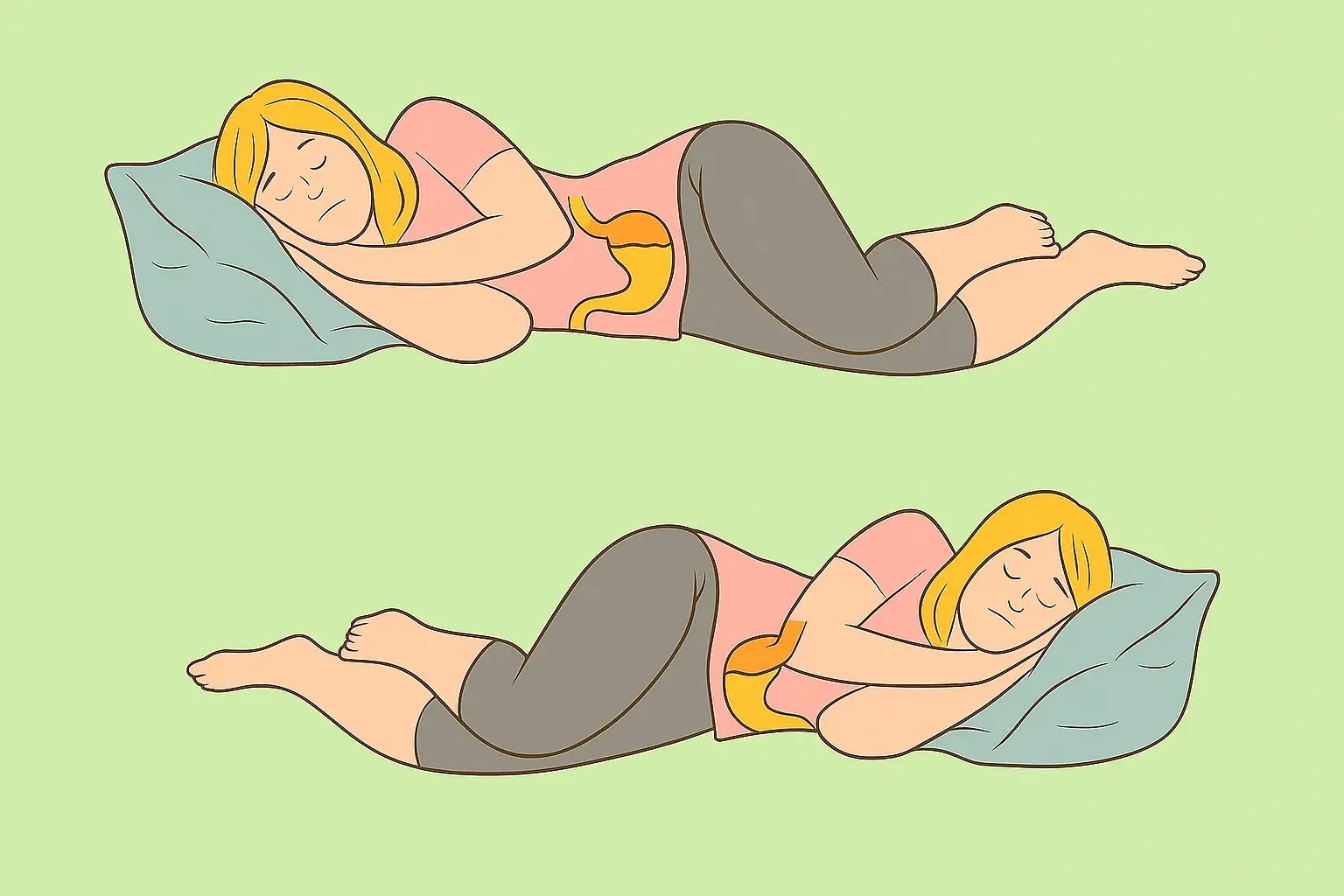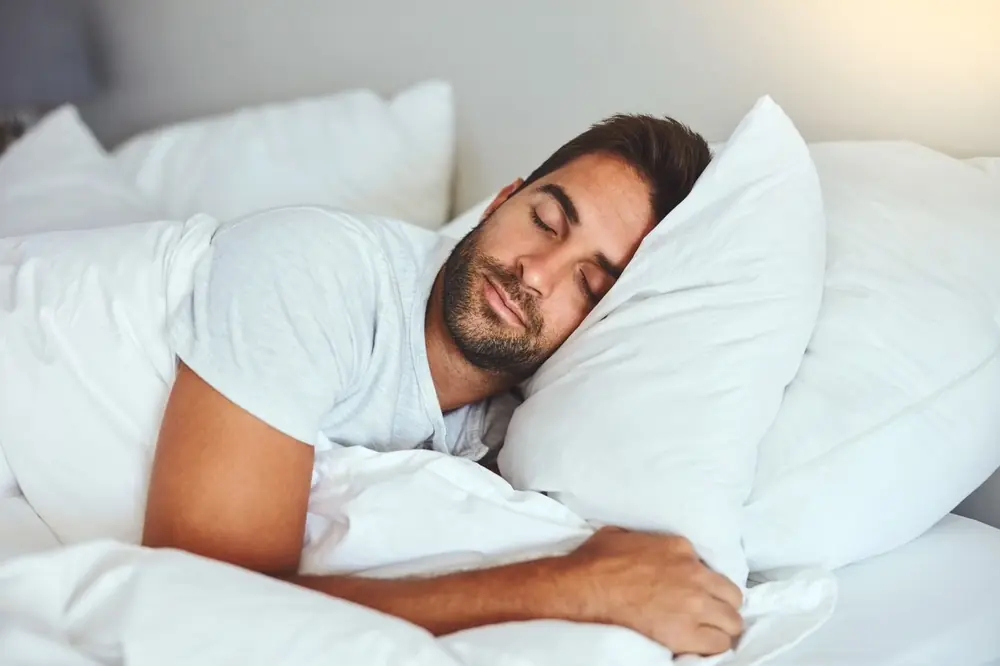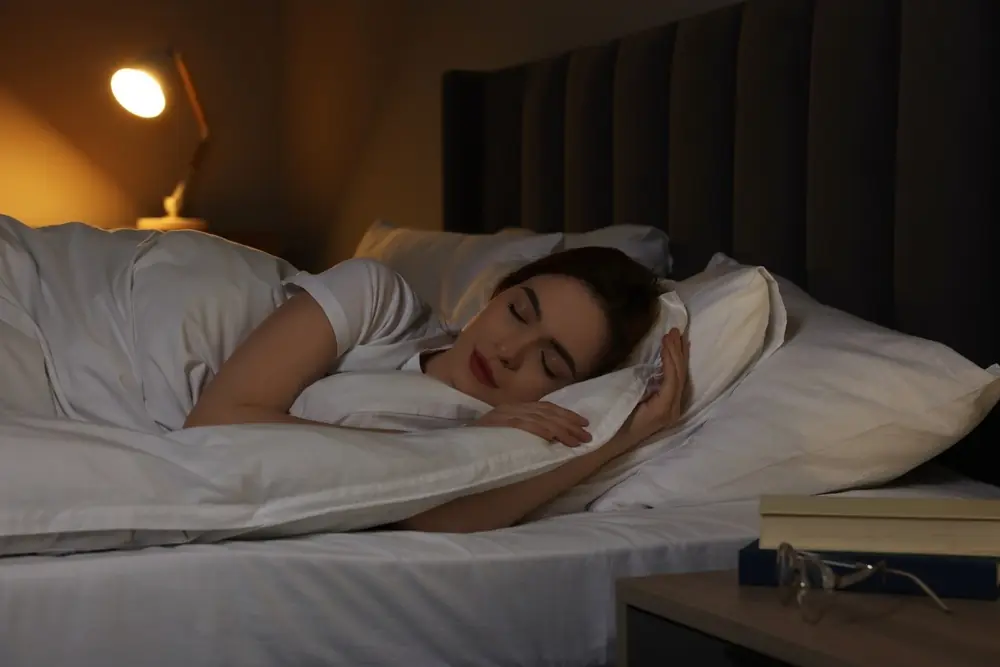
This is what sleeping on the left side does for our brain, stomach & glymphatic health
Why Your Sleeping Position Matters More Than You Think
Most people have a favorite sleeping position without realizing it can influence their well-being in surprising ways. While comfort is important, your posture in bed can either help or hinder your body’s natural processes. Those experiencing back discomfort, jaw tightness, digestive problems, or poor sleep quality may want to try a small but meaningful change: sleeping on the left side.

The Benefits of Sleeping on Your Left Side
- Reduces Back Pain
Sleeping on your stomach can strain your spine and lead to morning aches. Left-side sleeping keeps the spine aligned in a neutral position, relieving pressure on the lower back and promoting more restful sleep.
- Minimizes Snoring and Sleep Apnea Symptoms
When lying on your back, the tongue and soft palate naturally fall backward, narrowing the airway and increasing the likelihood of snoring. Side sleeping helps keep the tongue forward, maintaining a clear breathing passage.
- Supports Healthy Digestion
Because the stomach is located on the left side of the body, lying in this position allows gravity to aid digestion. It can help relieve bloating, constipation, and acid reflux by encouraging food to move smoothly through the digestive tract.
- Promotes Brain Detoxification
Few realize the brain has its own “clean-up crew” known as the glymphatic system, which clears metabolic waste during sleep. Research suggests side sleeping may boost this process, potentially lowering the risk of neurological diseases like Alzheimer’s and Parkinson’s.
- Improves Circulation — Especially During Pregnancy
Left-side sleeping helps increase blood flow to the heart and placenta, making it the recommended position for expectant mothers. Better circulation also supports overall cardiovascular health.

How to Train Yourself to Sleep on Your Side
- Choose the right pillow and mattress: Look for a pillow that supports the neck without tilting the head forward, and a mattress that balances firmness with pressure relief.
- Use supportive pillows: Place a pillow between your knees to reduce hip strain, or hug a pillow to prevent rolling over. Body pillows can be especially effective.
- Try a tennis ball trick: Sew a tennis ball to the back of your sleepwear to make rolling onto your back uncomfortable.
- Start on the couch: Narrow spaces naturally encourage side sleeping and help your body adapt.

Possible Downsides of Side Sleeping
While beneficial for many, side sleeping isn’t perfect. It can place extra pressure on shoulders, hips, and knees if the mattress is too firm, or cause spinal misalignment if it’s too soft. People with sinus issues or jaw tension might also notice increased facial pressure in this position.
Comparing Other Sleeping Positions
- On your back: May ease joint pain and improve spinal alignment, especially with a pillow under the knees. However, it can worsen snoring or sleep apnea.
- On your stomach: Experts generally advise against it due to strain on the spine and neck, though using a flat pillow and keeping arms by the sides can help reduce discomfort.

Bottom Line:
The best sleeping position is ultimately the one that helps you rest deeply and wake up refreshed. Still, if you’re struggling with back pain, digestion problems, or poor circulation, sleeping on your left side could be a simple, natural way to support your overall health.
News in the same category


Kimchi Consumption and Immune Balance: Evidence from a Controlled Human Trial

Repurposing Itraconazole as an Anticancer Agent: Mechanisms and Clinical Potential

Maternal Vitamin D Status during Pregnancy and Neurocognitive Development in Early Childhood

Overnight Olfactory Enrichment as a Novel Strategy to Enhance Memory in Older Adults

Vitamin D as a Regulator of Energy Partitioning: Insights from Preclinical Research

A 30-year-old man suffered a stroke while showering: Here are 5 things to remember when showering in cold weather to avoid accidents

Itchy Breasts? Here Are 6 Health Issues That Could Be Behind It

Colonoscopy: The key question you should ask your doctor before the procedure

Cannabis Extract Eases Chronic Low Back Pain, Improves Sleep and Mobility, Phase 3 Data Show

Beyond Weight Loss: GLP-1 Receptor Agonists Show Promise in Breast Cancer Outcomes

Shingles Vaccination Linked to Slower Dementia Progression and Reduced Mortality, Study Finds

‘Power Peeing’: What It Is and Why You Should Avoid I

Proven Health Benefits of Dates (Dried, Fresh, Medjool) – Science Based

DIY Turmeric & Ginger Shots to Fight Inflammation, Boost Immunity & Soothe Your Gut

White Bumps or Spots on Lips: Causes and Effective Treatments

HealthWhy Your Hard-Boiled Eggs Have That Weird Green Ring

Why Your Blood Pressure Is Higher in the Morning

This 20-Minute Treadmill Workout Builds Strength After 50

The Best Times to Eat Yogurt for Effective Weight Loss and Gut Health
News Post

Coffee Consumption, Additives, and Mortality Risk: Evidence from a Large U.S. Cohort Study

Kimchi Consumption and Immune Balance: Evidence from a Controlled Human Trial

Repurposing Itraconazole as an Anticancer Agent: Mechanisms and Clinical Potential

Maternal Vitamin D Status during Pregnancy and Neurocognitive Development in Early Childhood

Overnight Olfactory Enrichment as a Novel Strategy to Enhance Memory in Older Adults

Vitamin D as a Regulator of Energy Partitioning: Insights from Preclinical Research

Soaking garlic in honey – a remedy more precious than gold, preventing a multitude of diseases

This type of leaf is called ginseng, detoxifying, and liver-cooling: it grows when you plant a cutting

6 ways to use menthol oil to repel mosquitoes effectively: Mosquitoes won't dare come near, and your house will smell fresh

Eating plenty of these 5 vegetables during the cold season helps boost immunity and effectively fight inflammation

A 30-year-old man suffered a stroke while showering: Here are 5 things to remember when showering in cold weather to avoid accidents

Discovery of a substance that triples the risk of cirrhosis: Present in many household items

Itchy Breasts? Here Are 6 Health Issues That Could Be Behind It

Colonoscopy: The key question you should ask your doctor before the procedure

Cannabis Extract Eases Chronic Low Back Pain, Improves Sleep and Mobility, Phase 3 Data Show

Beyond Weight Loss: GLP-1 Receptor Agonists Show Promise in Breast Cancer Outcomes

Shingles Vaccination Linked to Slower Dementia Progression and Reduced Mortality, Study Finds

I keep finding bright orange dust collecting along my baseboards, and I can’t get pest control out anytime soon. What could this even be?

‘Power Peeing’: What It Is and Why You Should Avoid I
